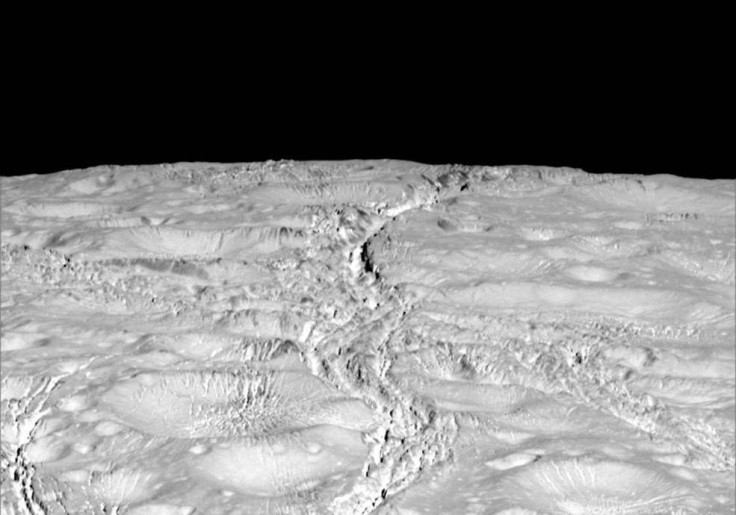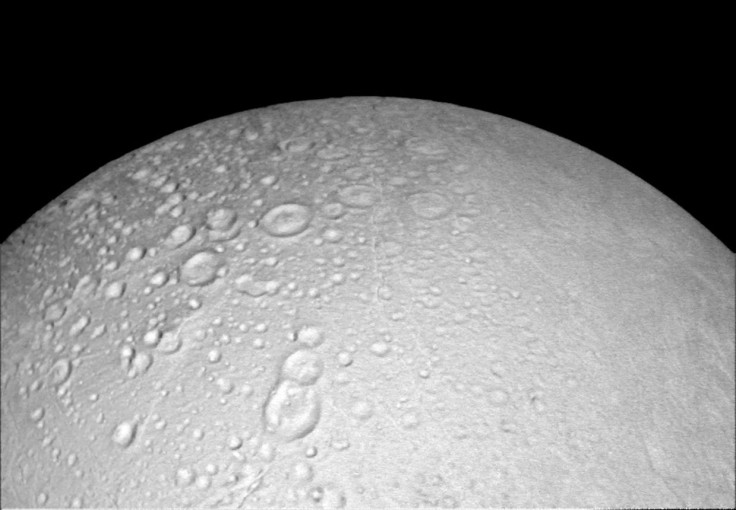Cassini Images Reveal Closest Northern Views Of Saturn’s Moon Enceladus

NASA’s Cassini spacecraft has obtained the closest views of the northern regions of Saturn’s icy moon Enceladus, which is believed to contain an extraterrestrial ocean beneath its ice. The images were taken during Cassini’s Oct. 14 flyby when the spacecraft passed 1,142 miles above Enceladus’ surface.
Based on low-resolution images from the Voyager mission, scientists previously expected the north polar region of Enceladus to be heavily cratered. But the new high-resolution Cassini images revealed drastically contrasting details. According to scientists, the spacecraft will continue transmitting images and other data for the next several days.
“The northern regions are crisscrossed by a spidery network of gossamer-thin cracks that slice through the craters,” Paul Helfenstein, a member of the Cassini imaging team at Cornell University, Ithaca, New York, said in a statement. “These thin cracks are ubiquitous on Enceladus, and now we see that they extend across the northern terrains as well.”

According to scientists, Cassini will come within 30 miles of Enceladus’ south polar region on Oct. 28 when the spacecraft is expected to sample the chemistry of the ocean beneath the moon’s icy surface. Scientists believe that the upcoming flyby will help them better understand the hydrothermal activity that occurs on Enceladus’ surface.
Cassini's final encounter with Enceladus will take place on Dec. 19, when the spacecraft will measure the amount of heat coming from the moon's interior. The flyby will be at an altitude of 3,106 miles, according to NASA.
© Copyright IBTimes 2025. All rights reserved.






















